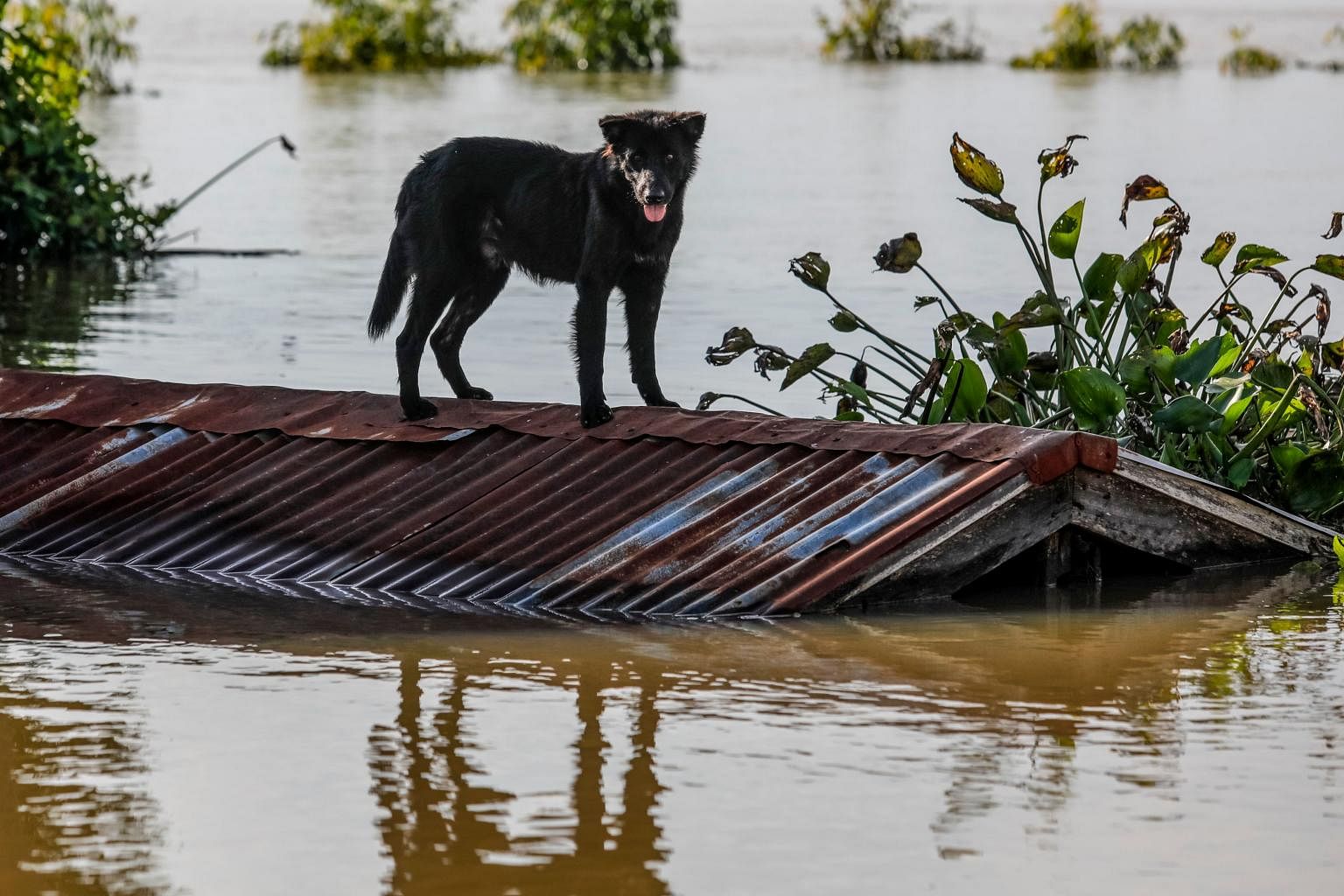BANGKOK - Much of Thailand's north-eastern region remains flooded two weeks after being hit by tropical storms Podul and Kajiki, leaving 33 people dead and four provinces submerged in floodwater as deep as four metres on Monday (Sept 16).
Authorities say it will take three weeks for the situation to return to normal in the region, which was hit only a few months ago by the worst drought in a decade.
The four provinces most affected by the floods are Ubon Ratchathani, Yasothon, Roi Et and Si Saket.
Eight people died in Ubon Ratchathani, a province with low terrain where the floodwater from elsewhere gushed in, according to the Department of Disaster Prevention and Mitigation. The water level was as high as five metres over the weekend, it said.
The crisis in the province which borders Laos and Cambodia is the worst in 17 years, said the Office of the National Water Resources (ONWR).
The authorities have dispatched help to the flooded areas, including draining water out with pumps, evacuating people and sending food, drinking water and other necessity items to those who remain stuck.
"I want to go to the hospital for my sinus infection, but there has been no boat passing by at all. I've been waiting since 6 am," an elderly man staying on the upper floor of his house told the morning news crew of Channel 3.

The streets are pitch-dark at night as street lights have gone out.
"We're using candlelight instead. I don't want to live in a shelter. It's crowded there. My stuff may get stolen," said another elderly man.
The situation in Ubon Ratchathani has prompted a social media hashtag #SaveUbon2019 which has been used in over 100,000 tweets.
But it will take at least 24 more days to drain the excess water out from the province, the ONWR said.
"This is because there is only one way to drain the water out, through the Mekong River. It's not possible right now to dig more waterways to drain the water out faster," Mr Samroeng Sangphuwong, deputy secretary-general of the ONWR, told The Straits Times.
In the four most affected provinces, more than 23,000 people have been evacuated. Prime Minister Prayut Chan-o-cha will appear on a television show on Tuesday (Sept 17) to call for donations for the flood victims.
Mr Samroeng said the flood crisis in Thailand is not as bad as that in 2011, where many parts of the country, including Bangkok and industrial estates just outside the city, were flooded. The crisis in 2011 killed up to 815 people and cost the country US $46.5 billion (S$64 billion) in economic losses, according to the World Bank.
Since late August, over 400,000 households across the country have been affected, while more than 3,000 sq km of plantations have been damaged, the department said.
Mr Manit Nachaiyayo, a farmer in the north-eastern province of Kalasin, told local newspaper Thairath that all of his almost 20,000 sq m of rice paddies have died even though the floodwater has been completely drained out.
"I'm so sad that I couldn't sleep at all. I invested 20,000 baht (S$896) in this and it's all gone," he said.
The total economic losses stemming from the floods are not immediately known, but according to the Industry Ministry, damage to factories has amounted to an estimated 133 million baht.
The north-east, also known as Isan, had been hit before by the worst drought in a decade in the middle of the year. Now, farmers are struck once again with floods.
The double disasters in Isan could reduce jasmine rice production by at least 30 per cent, with the price expected to rise by up to 20 per cent this year, Mr Jakkapol Charnburanawat, vice-president of the Thai Rice Farmers Association, told the Straits Times in early September.
Thailand, the world's second biggest rice exporter after India, exported 11 million tonnes of rice last year. The drought has brought down the export goal set by the Thai Rice Exporters Association to merely ninemillion tonnes this year.
Also on Thailand's popular island resort of Koh Chang, knee-deep flash floods resulting from heavy rainfalls over the weekend has cut off a bridge on the island. A makeshift bridge was being erected on Monday, according to deputy government spokesman Narumon Pinyosinwat.
"I'd like to reaffirm that we are not leaving anyone behind," she tweeted, saying each of the deceased flood victims would receive 50,000 baht in assistance, while people whose houses were completely damaged would receive 200,000 baht each.


